Steven Lyle Jordan's Blog, page 67
November 26, 2011
Time to concentrate on selling
 We are almost at the end of 2011; a year that has seen many new ebook reading devices, new services by ebook sellers, more schools and libraries opening up the possibilities of ebooks, and a lot of activity in general in the ebook world.
We are almost at the end of 2011; a year that has seen many new ebook reading devices, new services by ebook sellers, more schools and libraries opening up the possibilities of ebooks, and a lot of activity in general in the ebook world.
This was also my worst sales year ever. Even with my two most highly-acclaimed books becoming available this year and last. It seems I haven't been able to work out a way to encourage sales of my ebooks, nor have I been able to find affordable advertising outlets. I haven't made enough in the last year to take my wife out for a single decent dinner.
This has left me, understandably, without an incentive to write. I even have a few excellent story ideas, some continuations of existing books, and some brand new concepts. None of which do I feel like writing now. I mean… why? If no one's going to buy them, why should I waste hundreds, maybe thousands of hours writing them? So they've sat—and I've sat—at a loss for what to do with my time and effort.
Fortunately, I eventually came out of my malaise, and was able to look at the situation clearly: Why am I not selling; is it my product, or my ability to sell it? First, I am satisfied that I can write a good book, based on objective comments and a few awards I've garnered over the years. I make a serious effort to produce my ebooks in quality, both in formatting and editing. I don't think product quality is the issue.
What about my ability to sell? Well, to put it simply, it's dismal. I am not a salesman, and I don't have an advertising budget. That leaves me with low- or no-cost promotion and advertising, an arena dominated by hordes of other independent authors (and a few professionals). Unfortunately, I haven't managed to develop a sales or promotions method that will allow my work to rise to the top of the boiling cauldron that is the independent ebook market. Obviously, sales and promotion is the issue.
And complicating all of the above is the market. Presently, and despite the opportunities for independent authors to sell their wares, the ebook industry is still dominated by the major publishers. They have the prior relationships with major ebook markets like Amazon and Barnes & Noble, and they have the advertising dollars to make sure their books appear on website front pages and Kindle and Nook screens. They are the ones whose books turn up in Top 20 lists in major news outlets, and they are the ones whose authors turn up on the daily talk shows. In short, the supposed "pro-indie" market is still overshadowed by the publishing castle—that "boiling cauldron" of indie writers is down in the catacombs while famous authors cavort in the courtyard for the masses. If I can't rise above that, reach the courtyard, and convince the masses to give me a shot, all of that writing effort is for nothing.
So, this clear picture has forced me into a decision: I have decided to put any future writing projects on indefinite hold, until I figure out a way to break through the sales and PR wall to sell my books. For the foreseeable future, all of my effort will be put into sales and promotion, and only when I begin to make noticeable progress in that area will I write again.
Where will I start? I have no idea. I've tried numerous methods to get noticed and encourage sales, none of which have worked at all. This blog is essentially talking to myself, as essentially no one else is reading it. Establishing my regular presence on a number of discussion boards and groups has not brought me new customers; promotional tags in mass "Tell us about your book!" threads has given zero sales; submitting my books to sites for reviews has been fruitless.
About all that's left is spending money on advertising. But the kind of money that would be required to guarantee sales and profits over and above the advertising budget… well, I'll put it this way: If I had that kind of money, I wouldn't need to sell books.
So, I'm at an impasse at the moment. I'm not prepared to give up just yet, but I don't know what my next move is yet, either. I've got to get to the courtyard, and in a presentable-enough condition to get the masses to look my way and approve.
If that doesn't work, then… as a famous inmate once said, "There's only one way out of here… feet first…"








November 23, 2011
The Last Man On Earth Club: A great read
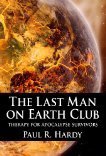 The Last Man on Earth Club by Paul R. Hardy
The Last Man on Earth Club by Paul R. Hardy
My rating: 4 of 5 stars
I really enjoyed The Last Man on Earth Club. Honestly, I picked this book up expecting it to be mostly humorous; I was pleasantly surprised to discover a serious treatment about an interversal organization that managed to round up the last survivors of parallel Earths, and offer them psychological aid after the death of their species. The world-deaths were wonderfully diverse, and some of them will sound very familiar (such as a planet where everyone went Zombie, and another that succumbed to a human-vs-AI war), but they are all handled effectively, not kitchy or predictably, and, of course, it is the fates of the individual survivors that's important.
The book cannily provided enough depth and dimension to the various survivors and their descriptions of their experiences as the last of their race that you almost felt you'd read their full story before being introduced to them here. Interestingly, the main POV character, Doctor Asha Singh, started out as such a blank slate that I realized only after a very significant interval that the character was a woman. Since I had no impression from the book that this was intentional, I can only guess that either some deficiency in the book, or in my attention, left this as a mystery so far into the book.
The book is also vague on the actual workings of technology, but that's a good thing; it could have easily bogged down the story otherwise. The story never threatened to spend too much time on interversal technologies, politics, races, parallels, etc; it stays nicely grounded.
I let all of my other reading and projects pile up so I could finish this one. I'm glad I did.








October 22, 2011
Despite Our Shadows: Sexier Lambs and Tigers
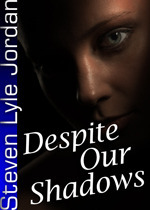 Despite Our Shadows is a re-release of an earlier title of mine, Lambs Hide, Tigers Seek. This is also the only non-science fiction title in my catalog; a number of fans had suggested that I try my hand at a non-science fiction mystery, and this was my response to the challenge. It turned out to be less a mystery and more of a noir tale of investigator Alain Guest (that's Uh-lane, not Ee-lane) and his efforts to shake free of his past, as he pursued a girl who may have been destroyed by her past… and I think it was a better story for that.
Despite Our Shadows is a re-release of an earlier title of mine, Lambs Hide, Tigers Seek. This is also the only non-science fiction title in my catalog; a number of fans had suggested that I try my hand at a non-science fiction mystery, and this was my response to the challenge. It turned out to be less a mystery and more of a noir tale of investigator Alain Guest (that's Uh-lane, not Ee-lane) and his efforts to shake free of his past, as he pursued a girl who may have been destroyed by her past… and I think it was a better story for that.
The story is the same: In 2007, heiress Ellen Levinson vanished from a downtown Washington hotel under mysterious circumstances. Four years later, a series of blackmail letters leads investigator Alain Guest to Nashville, in search of the missing heiress. But things go wrong quickly, getting Alain tangled up with a local Goth girl who forces him to deal with his own damaged past. As the investigation threatens to crumble, Alain's mental state just may go down with it…
The original book has been re-edited and re-proofed to improve readability and to improve the story itself. Shadows is one of the sexiest stories I've written so far, and when I originally wrote it, I was concerned that the story would be too sexy for mainstream consumption. So I intentionally toned it down and put some of the more racy scenes through the "fade to morning" filter, allowing the reader to fill in the blanks. But when it came for the rewrite, I rethought the idea of editing out or glossing over the sex scenes.
Though it may have been standard operating procedure for most of the 20th century, today's media is less afraid to show and tell what goes on behind closed doors. Television (especially pay cable) has undergone a sexuality renaissance, displaying more skin and (formerly) private areas, and allowing sex to leave its behind-the-curtain and offstage past and proudly take center stage.
Likewise, literature has gotten sexier, and sexual scenes have become almost as explicit and descriptive as what was traditionally considered porn… and this material is still sold over-the-counter to anyone—specifically, any pre-adult—with the money to pay for it. Sex, it seems, isn't the forbidden fruit it used to be; or, rather, it still is, but whereas the media used to timidly wave that forbidden fruit at the audience for titillation's sake, now it thinks nothing of hacking up pieces and serving them to the audience with cream cheese.
With that in mind, I decided to put back whatever I'd left out of the original release. Now, Despite Our Shadows has essentially been restored to its original intent, and the sex that very clearly makes up a major aspect of the story and characters is no longer veiled and hiding strategically behind the rocks and columns. The characters are much more believable now; more well-rounded, more fleshed-out, more passionate and…
Well. I think that's enough foreplay. If you want more, you know what to do.


 [image error]
[image error]


 [image error]
[image error]
October 5, 2011
And now we know: UFO was 30 years ahead of its time
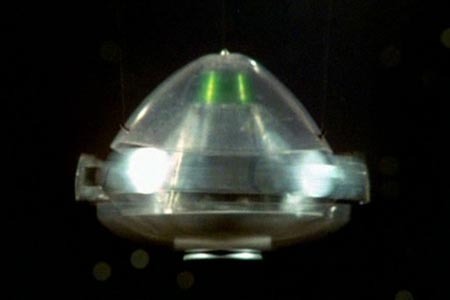 Gerry Anderson's 1970 series UFO, the show about a secret multi-government organization charged with repelling a constant alien invasion fleet, lasted only a season, and never did much in the ratings game. Despite a great look and good production, people didn't "get it;" it wasn't showy like Star Trek, silly like Lost In Space or mysterious like The Twilight Zone. (Brits: Insert your own TV references, please.)
Gerry Anderson's 1970 series UFO, the show about a secret multi-government organization charged with repelling a constant alien invasion fleet, lasted only a season, and never did much in the ratings game. Despite a great look and good production, people didn't "get it;" it wasn't showy like Star Trek, silly like Lost In Space or mysterious like The Twilight Zone. (Brits: Insert your own TV references, please.)
But now we know why UFO didn't make it: It was too far ahead of its time.
UFO was produced by Gerry and Silvia Anderson, the group who brought the world various Supermarionation (hi-tech puppets) programs like Thunderbirds, Captain Scarlet and Fireball XL5, and later, the live-action Space:1999. Set in 1980, and replete with well-designed sets and mod styles (big hair, long sideburns and lots of leg), UFO presented the daily routine of a para-military organization in its struggle to prevent aliens from establishing a beachhead on Earth to (what else?) steal our organs for their own survival. The aliens were clever, but we had dogged and relentless determination and good-old international know-how on our side, and destroyed or drove them back every time.
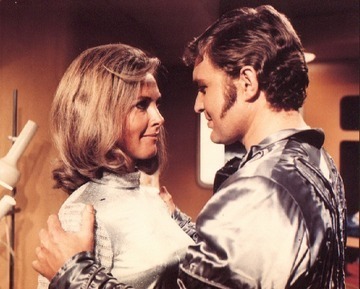 UFO was unique among SF shows, in that the main theme was really more of a backdrop for the real theme of the show: The people, the relationships, the troubles of the officers of SHADO (Supreme Headquarters, Alien Defense Organization – geeky Steve) as they dealt with their daily lives. And those daily lives involved dealing with lovers and ex-wives, relationships with those inside and out of the organization, job pressures, security, keeping secrets about your work, racism, sexism, drugs, paranoia and personal foibles that sometimes impacted on how well you do your job.
UFO was unique among SF shows, in that the main theme was really more of a backdrop for the real theme of the show: The people, the relationships, the troubles of the officers of SHADO (Supreme Headquarters, Alien Defense Organization – geeky Steve) as they dealt with their daily lives. And those daily lives involved dealing with lovers and ex-wives, relationships with those inside and out of the organization, job pressures, security, keeping secrets about your work, racism, sexism, drugs, paranoia and personal foibles that sometimes impacted on how well you do your job.
An SF show that's mainly about people and their personal problems. Sound familiar? Does Lost ring a bell? How about Galactica?
 Science fiction has been growing up, and the childish fascination for explosions and flashy effects is being replaced by the more adult concerns of family, friends, social groups, responsibilities and our place in our world. Yeah, yeah, there's an alien coming… but my son just got hit by a car, and I need to get medicine to him! (Yes, that was a UFO episode.) I can't tell anyone about the alien I just killed… because then they'd know I was here having an affair! (Yup… another one.) I know you need a new Moon buggy, but there's nothing left in the budget! (You get the picture.) These were stories about people with problems viewers could relate to, resulting in its being labeled as "too soap-opera-ish" at the time.
Science fiction has been growing up, and the childish fascination for explosions and flashy effects is being replaced by the more adult concerns of family, friends, social groups, responsibilities and our place in our world. Yeah, yeah, there's an alien coming… but my son just got hit by a car, and I need to get medicine to him! (Yes, that was a UFO episode.) I can't tell anyone about the alien I just killed… because then they'd know I was here having an affair! (Yup… another one.) I know you need a new Moon buggy, but there's nothing left in the budget! (You get the picture.) These were stories about people with problems viewers could relate to, resulting in its being labeled as "too soap-opera-ish" at the time.
Yet, UFO was broaching such subjects when other shows were busy trying to figure out which bits of metal would make the next space explosion look cooler.
I've recently heard people lament the past innocence of SF shows like Star Trek; the simplicity, the barely-factual science, the cliff-hanger last-minute solutions, etc. They long for the simple sci-fi of yesteryear, the equivalent of going out into your backyard and playing "army men" in the grass (or, in this case, "space men"in the dirt).
In fact, the science of UFO was simple (and largely unworkable). But it really didn't matter, any more than the mechanics of "jumping" through space mattered to the central theme of Galactica, namely, what it means to be Human. UFO was in the same place, dealing with the same issues. But it was doing it 40 years ago.
If you've never seen UFO, try to check it out… it's available on DVD. If you do see it, maybe you'll have the same realization I had: These guys were way ahead of the curve.








September 27, 2011
Solar Decathalon: Is the future of American housing in here?
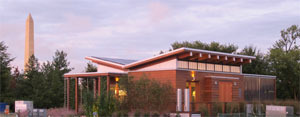 The 2011 Solar Decathalon is on in Washington, D.C. As in previous years, universities and governments from around the world have shown up in Washington to display energy-efficient home designs, supported by the companies that provide the technology for efficient homes, and demonstrating unique and clever ways of putting them all together.
The 2011 Solar Decathalon is on in Washington, D.C. As in previous years, universities and governments from around the world have shown up in Washington to display energy-efficient home designs, supported by the companies that provide the technology for efficient homes, and demonstrating unique and clever ways of putting them all together.
The homes are evaluated on multiple points of performance and practicality, leading to winners in multiple categories, and one overall winner, at the end of the week.
All of the homes have to be livable. Some of the homes are merely test-beds… more like a high-tech camping shelter than what we might consider an actual home. But then, some of those serve to remind us that maybe we don't need all the modern trappings of an American house just to be comfortable.
The best thing about the homes is, you can visit them… tour them… see inside and find out how they tick. I've been going to the Decathalons for years, checking out the houses and their innovative design choices. I honestly hope that at some point, some (or even all) of the designs presented at the Decathalon become available for consumers to buy and put on their lot of choice. I've seen a number of them that I would have been happy to buy, if I'd been in the market for a new home. And I consider most of them ideal for vacation homes. Take, for example, the Team Maryland home (pictured at top), a design that I'd be glad to call home right now.
Whether or not these designs become actual homes, of course, isn't the point. The point is to showcase ways of redesigning our homes to be more practical, energy-efficient and sustainable. On that point, every home is a winner, and worth seeing.








September 25, 2011
As The Mirror Cracks: Superheroes you can believe in, and a worldwide threat to suit them
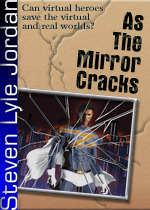 My latest re-release delves into one of my favorite subjects: Modern mythology, or, as they are more commonly referred to, Superheroes. Having grown up around the many comic books and cartoons about the colorful exploits of these demigod-like characters, I've always fantasized about a world where superheroes could actually exist. In As The Mirror Cracks, I've managed to create such a world, and it is totally believable… because it is, in fact, a virtual world that people in the real world can visit.
My latest re-release delves into one of my favorite subjects: Modern mythology, or, as they are more commonly referred to, Superheroes. Having grown up around the many comic books and cartoons about the colorful exploits of these demigod-like characters, I've always fantasized about a world where superheroes could actually exist. In As The Mirror Cracks, I've managed to create such a world, and it is totally believable… because it is, in fact, a virtual world that people in the real world can visit.
The story of As The Mirror Cracks centers around a fully-immersive virtual world called The Mirror, one that has become so widespread and popular that people from all over the world regularly spend time within its digital boundaries, working to earn money that can be spent in the real world, and (if they have enough money) customize their avatars, or in The Mirror's case, "reflections," to suit their tastes. Many reflections are as hyper-real as they can be made, and some of them are superheroes. Suddenly, we can become superheroes and save the day.
And as suddenly, we realize that one reality may actually impact the other. In As The Mirror Cracks, real-world and Mirror finances have become fully intertwined, so a financial crisis in one world can affect the other. When a plot is discovered that can destroy The Mirror, the fate of the real world is also at stake, because a loss of the financial resources of The Mirror could mean a global financial collapse in the real world. So saving The Mirror is as vital as saving the real world.
When I conceived of this story, I loved the idea of superheroes in a virtual world. In there, superheroes can make perfect sense. Those physics-defying powers can be possible, because the virtual world can have "physics" of its own to permit things that could never happen in the real world. Virtual worlds can become alternate realities that live beside our own reality and allow us to visit. This has given me the chance to write superheroes into a story that is fully realistic and believable, a "hard-SF" story with workable comic-book heroes… the best of both worlds.
The story was originally to be called Right Brane, the same as my ePublishing title. I saw a lot of similarity to the idea of the virtual world, and the concept of our reality being one of a potentially-infinite number of "branes" existing literally side-by-side in the universe. String theory suggests that our universe is actually a three-dimensional projection of a two-dimensional brane, existing alongside other projections that are only separated by degrees of frequency between them… other realities barely separated from our own.
I conceived of the Right Brane as a connection between our brane of reality, and the brane of fiction, giving us access to their stories; and the story's Right Brane would represent that as a virtual reality tightly tied to our own. However, as the story developed, the poetic strength (and more public familiarity) of "Mirror" and "reflections" won out, and I went that way instead.
If you want to have as much fun reading this story as I did writing it, try matching up as many of my invented superheroes with their approximate counterparts from other comic book companies and cartoons. It might make for a cool drinking game…








September 17, 2011
No more OCR excuses: Here's how to do it RIGHT
I am, to put in simple words, sick and tired of hearing the same lame excuses for the state of quality of old and backlist books that are scanned and converted via Optical Character Recognition (OCR) software into ebooks. All of us ebook readers are painfully familiar with the ridiculous text errors, the "a"s turned to "o"s, the "p"s turned to "q"s, the lost punctuations, the nonsense words and phrases, the missing lines, paragraphs and entire sections, etc, etc, that turn up in these ebooks. And we are also painfully familiar with the publishers' excuses for this state, which usually boils down to: "We work hard… it's the hardware/software's fault!"
BULL. It's how you're using the hardware/software; in other words, WRONG.
So, I'm going to tell you how to do it… the way we did it over a decade ago, and got less than .1% errors in our work. PAY ATTENTION.
Over a decade ago, I worked in an in-house print department that produced thousands of short documents a day, using 3 high-speed printers, 2 of them networked DocuTech digital printers. Those machines were capable of printing anything (in black and white, anyway) in high quality. All they needed was high quality going in. My initial job, upon arriving there, was showing them how to get that high quality input that would give them high quality output. I had done the same at my previous job. So I knew whereof I spoke when I was hired.
Occasionally, we were asked to produce a digital version of a book our offices had created. After going through the process a few times, I hit upon the best method for clean and accurate digital conversion. My attempts using this method were highly successful, and not that difficult at all… any small to large organization can do this.
The process starts with the original book… and this is where the most important first steps must be taken to ensure high quality. Many books aren't in the best shape for scanning, due to age, flimsiness of the paper, coloring, stains, etc. Also, text is often rendered rather small, especially in paperbacks. This is a notoriously poor source material, and must be improved before it is used.
To deal with this, the first step is to CREATE NEW AND BETTER PAGES. Use a high-quality photocopying machine or scanner that has both adjustable brightness and contrast settings, and an enlarging feature. Before you start, take sample images of a page, adjusting brightness and contrast to basically darken text to as close to 100% black as possible, and erase any image artifacts from browning or stained pages; you want as clean an image as possible, solid black text against pure white backgrounds.
Once you have your clean high-contrast setting, ENLARGE THE IMAGE to letter-size. This simple step, which few OCR processes use, improves the recognition of characters immensely, possibly on a logarithmic scale, during the scanning process.
Finally, if you are using a scanner, this is an important addition to the process: Before doing your scan, MAKE SURE THE SCANNER IS SET TO BLACK-AND-WHITE AND AT LEAST 300DPI RESOLUTION. Many photocopiers will allow you to make the same settings. This results in a larger file, which can take a longer time to process, but is important to get the best image of each character possible.
With these settings saved, SCAN OR PHOTOCOPY YOUR PAGES. For best results, cut the pages free of the spine so they can be perfectly flat when scanning/photocopying. If your scanner/photocopier has a feeder that will automatically feed and scan both sides of a page, by all means, use it and save yourself the grief (and the time).
If you used a photocopier, you should now have a letter-sized, one-sided stack of papers that represent your book. This is ideal for running through a sheetfed scanner with pretty much any OCR software. Many high-speed sheetfed scanners have limited adjustment controls… that's why it is important to provide the highest-quality input sheets. If you do have contrast and resolution controls, make sure they are set to black-and-white and at least 300DPI, just like your earlier photocopied images.
Most scanners these days come with OCR software, or recommend OCR software to use with their hardware. Start with these applications, but don't be afraid to try other apps with more features if needed. When you do your scan, the software should automatically start the OCR process. WAIT UNTIL THE OCR FILE IS DONE, AND SAVE IT.
MAKE A COPY OF THE FILE FOR EDITING. If you have good OCR software, it will allow you to do sophisticated find-and-replace tasks; this is great to have if you discover an odd OCR artifact, such as the transposition of every "h." with "la" or "&" with "$". Most of the incorrect artifacts you're likely to find will be a result of dressy typography that uses non-standard or oddly-shaped characters. These are things that even the best OCR applications can't always interpret correctly. Your larger and high-res images should generate much better recognition and fewer errors of almost all of the rest.
If your OCR software can't do the find-and-replace tasks, open the file in a word processing app like MS Word, and use its find-and-replace functions there. As you make these document-wide edits, check to make sure you didn't mess something up (such as correct words that your find-and-replace made incorrect), and if everything's good, save the file. Then do the next one, check it, and save it. This way, if you do an edit that doesn't work out, and it's too wide-spread to easily fix, you can revert to the last saved file to try it again.
Done with that? Good. Now, READ IT. I mean, REALLY, REALLY READ IT. Look for type artifacts that were missed by your initial find-and-replace process, possibly words that have been re-recognized as similar words, such as "words" to "wards," "it" to "if," etc. A thorough proofing pass should catch these typos, and thanks to the process outlined above, there shouldn't be many.
I have used this process to create ebooks, and have experienced fewer than 1 word or type errors in 20 pages of OCR results.
I am sure that most of the organizations doing scan-and-OCR of older books—most of which are probably contractors working to generate as much text per hour as they can—are not enlarging copy or scanning at 300DPI resolution. Why? To save time; low-res versions of smaller pages process faster. This is why the overall quality of files presented to publishers is so dismal. Unfortunately, the publishers are still responsible for proofing the text and catching these errors, and I have serious doubts that they are doing that job at all. If scan-and-OCR workers use my production steps, the publishers' proofers will have even less of an excuse for bad copy.
Feel free to forward this entry to any publishers or OCR companies you know of; maybe we'll see much better quality ebooks in the future, especially if some people take heed of these steps.








September 4, 2011
The Cloud… meh. Where's my universal key?
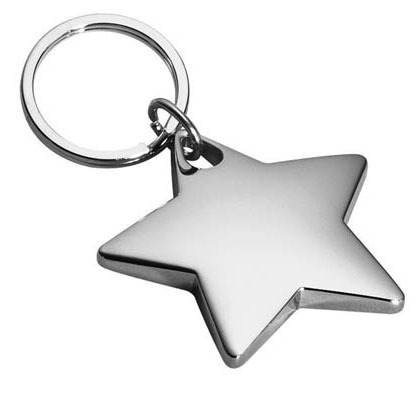 The Cloud is the wonderful euphemism being paraded about for the practice of storing personal data in remote locations, where it will be backed up and accessible at all hours from any location. Thanks to The Cloud, a person will no longer have to worry about carrying around or keeping track of their personal data; something out there does that for them. The Cloud takes advantage of our incredibly connected society and technology, which keeps us all in touch with the world 24-7-365. It provides us security in an unsecure world.
The Cloud is the wonderful euphemism being paraded about for the practice of storing personal data in remote locations, where it will be backed up and accessible at all hours from any location. Thanks to The Cloud, a person will no longer have to worry about carrying around or keeping track of their personal data; something out there does that for them. The Cloud takes advantage of our incredibly connected society and technology, which keeps us all in touch with the world 24-7-365. It provides us security in an unsecure world.
Big deal! The promises of The Cloud are so much Star Trek and vaporware. I don't need anything The Cloud has to offer… I can store my own data, back it up and recall it whenever I like, from my laptop or my smartphone! Hock, patooey on The Cloud!
What I want is a universal key!
Right now, I have multiple keys to my house, keys to my and my wife's car, keys that lock up my bicycle, keys that open suitcases and boxes, etc, etc, etc. Each one is a piece of metal, some of them flimsy as hell, used to trip tumblers in a sealed contraption that is old as time, and in most cases, easy to pick with a few basic tools. Yeah, that's secure.
I also have a key fob to get me into my office. I like the fob. All I have to do is swipe it near a scanner, and I can enter my building from any entrance, get clearance on the elevator, and get clearance to enter my office floor. The fob only had to be programmed with my ID, and the building's system had to be programmed to accept my ID.
So I ask you: Why can't my house be programmed to accept the same ID? Why can't my car accept that ID? Why can't every lock I own operate off of that one fob?
Imagine not having to carry around a heavy set of 8, a dozen, a few dozen keys everywhere you went. Less weight and bulk in your pocket… you could even wear the fob on a necklace, a bracelet or a belt. And if it was operated just by proximity, there'd be no more fumbling to get the key out, finding the correct key on a ring of keys, fighting to find the lock in the dark, or rushing to get in out of the rain or cold.
Now that's progress!
Cars are already equipped to use key fobs. Houses could easily be set up to accept a fob for entry. Something like a suitcase or a bicycle lock might be a bit harder, because you'd probably need to equip them with a self-powered mechanism; but that wouldn't be insurmountable. At any rate, the keys I use on a daily basis ought to be winnowed down to one device. One fob that all my locks recognize. Each lock has to be programmed (by someone who acts as a master controller) to recognize your fob's ID, and you're done!
And those fobs don't all have to look like… well, fobs. Miniaturized processors and transceivers can easily be fit inside all manner of decorative devices, much like the keyring objects people attach to their keys now. Someday, that little tchotchke or the tiny plastic dolphin or the miniature replica of a Corvette that used to hold the keys that got you into places… will actually be what gets you into places!
I'm looking forward to the day when I get up in the morning, get dressed, and grab the one little metal token that will unlock everything I approach and use. The Cloud? Meh. A universal key? Now that's useful.








August 21, 2011
Cyclist-versus-driver: Vehicle racists and skewed priorities
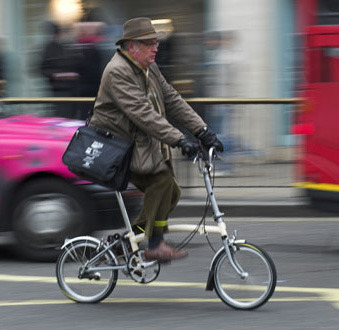 In the U.S. these days,more and more people are forsaking the automobile and other forms of transportation in urban areas, and taking to bicycles to get around (myself included). Many have achieved shorter commuting times, or gained significant health benefits, from riding, as well as saving themselves in commuting costs. (My ride saves me $100 a month, paying for my commuter bike in four months.)
In the U.S. these days,more and more people are forsaking the automobile and other forms of transportation in urban areas, and taking to bicycles to get around (myself included). Many have achieved shorter commuting times, or gained significant health benefits, from riding, as well as saving themselves in commuting costs. (My ride saves me $100 a month, paying for my commuter bike in four months.)
All those cyclists have been noticed. It's hard not to find articles, TV news stories, editorial comments and legal argument over the presence of bicyclists on America's roads. Most of it is anti-bicycle: America's motor vehicle operators have apparently decided that bicycles and their riders are hazards, to be removed from the landscape as soon as possible. And their voice is piercing—there are a lot more motor vehicle operators in the U.S. than there are adult bicyclists.
But if bicycles aren't to be on the roads… where are they to ride? On the sidewalks, those much narrower spaces filled with pedestrians (another class that regularly argues with the motor vehicle operators over right of way), tree boxes, stairways and trash cans… where there are no rules of conduct and right-of-way to separate walkers and bikers… and which are not always available on every roadway? That's crazy.
There are two hard facts to consider: One, that bicycles are wheeled vehicles, much faster than pedestrians, and so are better suited to the wider and smoother roadways than the sidewalks; and Two, bicycles are at a disadvantage on the roads, as the preponderance of motor vehicles on those roads has historically relegated everything besides themselves to last-priority status… second class citizens.
When automobiles were first introduced to American roads, they shared them with walkers, bikers, carts, trolleys and horse-drawn carriages… and other than their status as "rich man's toy," there was nothing to give them dominance of the road. But after World War II, the auto became synonymous with American recovery, growth and prosperity. The nation began to reshape itself as the Car Nation, and our roads and laws came to be optimized for speedy vehicles. And in the process, every other type of vehicle found itself removed from those avenues as much as possible, or segregated to lesser areas of the road, not unlike the social system that at that same time created "whites only" establishments and bathrooms. Into this segregated niche fell the bicycle.
Bicycles are treated by most major municipalities as the niggers of the roads. They are told to ride as close to the right of the road as possible, in lanes usually filled with parked cars, construction equipment, trash and sewer grates; staying out of the other lanes, even when they need to make a left turn ("Get off and walk with the pedestrians"). In roadway situations, they are expected to obey the same rules of the road as motor vehicles. Yet those motor vehicles, superior in size, weight and power to bicyclists, regularly ignore the rules of the road that give right-of-way to another vehicle like a bike, passing bikes in the same lane, cutting them off and turning into intersections that have bikes already in them.
Then, when a bike happens on a convenient moment and can claim his own right-of-way, he is vilified; drivers honk, yell, throw things and try to force the bicyclist off the road. The bicyclist is the villain, the one in the wrong, whereas the motor vehicle driver is the one being put-upon.
For the past few months, each time I've checked out the editorial section of my local newspaper, I've found at least one letter of an ongoing rant between drivers and cyclists, both accusing the other of being illegal, immoral or, at least, inconsiderate in their use of the roadways. When cooler heads assert themselves, they usually discuss segregated roads, and the idea that bikes should be treated just like cars. But these ideas are contradictory: Why should non-motor vehicles, on a segregated road intended for non-motor vehicles, follow the same rules as a motor vehicle?
Bicycles are not pedestrians. They are not motor vehicles. They are something in-between. They are a transportation device that was around long before automobiles came into existence. They are desirable vehicles, providing health benefits to the user, cheap transportation, being more efficient in energy use, taking up less traffic space on the roads, and contributing no pollution to the air. Bicyclists are more attentive of the road, as they cannot manage the multitasking (eating, applying makeup, games-playing, fighting with backseat children, etc) that have made motor vehicle operators more distracted and more accident-prone. There should be more bicycles in U.S. cities than there are cars. The U.S. should be encouraging the use of bicycles in everyday travel, as is the norm in most other countries. The U.S. should especially prioritize their use in cities, where we want less of the always-congested and polluting motor vehicle traffic, and more of the efficient and non-polluting pedestrian and bicycle traffic.
As bicycles are not motor vehicles, and are not pedestrians, they should have a set of laws designed for and applied to them, a mode of guidance that dovetails with the laws of motor vehicles and the laws of pedestrians (yes, they really have laws assigned to them too)… but that does not give bikes second-class status to the car, as modern U.S. law does.
In most cases it would be best for bicyclists to have their own lanes of travel, separating them from faster and more dangerous motor vehicles just as pedestrians are separated from motor vehicles by sidewalks. In areas where this is not practical, rules of the road should be clear as to the responsibilities of every vehicle type on the road.
In terms of priority: Right-of-way should be given to cyclists and pedestrians over the larger, heavier, more powerful and more dangerous motor vehicle. This is especially true in the city, where pedestrians and smaller vehicles can move much more efficiently than motor vehicles. Yes, I consider this important, as it would encourage more bicycle riding in congested areas, and discourage car use.
As you may have guessed, the real issue here is the priority given, at all times, to motor vehicles… a priority that needs to be altered or removed. Motor vehicles, by virtue of sheer number, have dominated our roads, our neighborhoods and our cities, forcing us to create living, working and shopping spaces designed for the car, and against everything else. And now, as other modes of transportation (especially bikes and foot traffic) demand their rights, they usually find themselves shouted down by the collective horns of motor vehicles.
Roads, laws and vehicles are specifically designed to give dominance to the motor vehicle. And the result of this dominance has been a breed of drivers who ignore road laws and other modes of transportation, have developed bad habits (like powering through stop signs and, when they do stop, blocking crosswalks and imposing themselves into opposing traffic), have been given slaps on the wrist for violations, and have become the result of more deaths in this country than any other single source.
We now know this to be a counter-productive trend, damaging to our living spaces, our social systems, our wallets, our environment and our lives. It's time to take priority away from our least efficient, most damaging transportation options, and give it to our more efficient, more desirable modes of transportation. And of all possible modes of transportation, the bicycle should be at the forefront, the most desirable of all forms of transportation. The one that should lead all others.








August 19, 2011
Back to the future for the U.S. space program
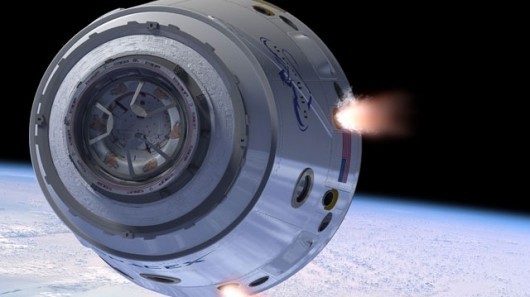 Looking at first glance like an Apollo spacecraft of old, the SpaceX Dragon spacecraft is a private industry ship, has visited space once, and is due on November 30 to launch again, then dock with the International Space Station (ISS) 9 days later.
Looking at first glance like an Apollo spacecraft of old, the SpaceX Dragon spacecraft is a private industry ship, has visited space once, and is due on November 30 to launch again, then dock with the International Space Station (ISS) 9 days later.
After years of watching the more advanced-looking Space Transport System, or Space Shuttles, plying their winged bulk into orbit and back, this almost seems like a step backward in time; why do the newest spacecraft look like revamped 1970s models? Are we flying Corvairs to space now?
Yet, the shuttle system, for all its points and faults, was an incredibly expensive system that, when it failed, failed disastrously. The system overall was frighteningly complex, especially the bolted-on rocket boosters and external fuel tank, making the entire assembly an ungainly beast. The heat shield tiles were always the most critical part of the Shuttles, and the most fragile, each of the thousands of tiles capable of dooming a mission if it was lost. The computers were dinosaurs compared to modern systems, and incapable of being upgraded and significantly improved. Although it had an incredible cargo capacity, it could still not carry our largest satellites. And it had no emergency escape system.
And flying beside the shuttles, the Russian Soyuz spacecraft—also as old as the Apollo program—had an incredibly good flight record, and a design that has been only minimally altered to keep up with the 21st century.
So maybe we should take the hint: We just weren't ready to support a winged Space Shuttle; maybe we were over-reaching; maybe we're better off with a simpler, less glamorous but more robust design. No more Esplanades; it's time to go back to F-150s.
That's where SpaceX seems to be taking us, towards a system that will separate manned capsules and cargo flights (cargo flights will be automated and controlled remotely, as the December docking with the ISS is supposed to be handled). Its design will incorporate the latest in technology, but the actual flight system will be based on tried-and-true vertical lift rockets and parachute landings.
It is hoped that the SpaceX system will be able to handle a significant part of the load of getting materials to the ISS, taking the burden off of the Soyuz system that was recently sold to the European Space Agency. And it may play a part in future spacecraft designs for other missions, becoming the framework around which further-reaching manned and unmanned missions may be designed.
But at this point, it's mainly good to see America won't be abandoning its space technology anytime soon… we are privatizing it, a step that perhaps should have been taken a decade or two ago, but better late than never.











